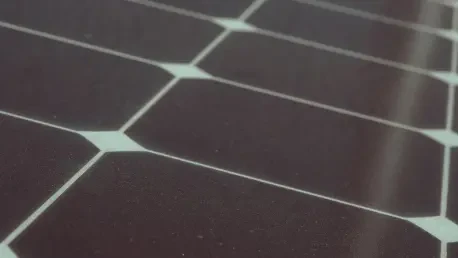What if a small village could light the path to a cleaner, greener future with an idea as bold as floating solar panels on water? In Monroeville, Ohio, a quiet community is doing just that, harnessing the surface of a local reservoir to generate sustainable energy. This pioneering project, a 6-megawatt floating solar array, is not just powering homes—it’s redefining how rural areas can tackle the global energy crisis with innovation and grit.
A Groundbreaking Step for Clean Energy in Ohio
The significance of Monroeville’s endeavor cannot be overstated in a state often associated with traditional energy sources. This floating solar array, one of the largest of its kind in the United States, represents a transformative shift toward renewable energy. It showcases how even smaller communities can play a pivotal role in combating climate change by adopting cutting-edge solutions that maximize limited resources.
Spanning a local reservoir, the project generates over 7,500 megawatt-hours of electricity each year, enough to supply countless homes and businesses in the area. Through a long-term Power Purchase Agreement with Gardner Capital, the Village secures a steady flow of clean power directly into the local grid. This initiative stands as a beacon of hope, proving that sustainable energy is within reach for places far removed from urban tech hubs.
The Rising Need for Floating Solar Technology
With land becoming an increasingly scarce commodity for solar farms, floating solar offers a compelling alternative that addresses multiple challenges at once. This technology allows communities to bypass the conflict between energy development and preserving farmland or natural habitats. For Monroeville, placing solar panels on water means protecting over 30 acres of valuable land that would otherwise be consumed by a ground-mounted system.
Beyond space efficiency, this approach tackles environmental concerns head-on. Floating arrays reduce water evaporation to nearly zero, a critical advantage in regions vulnerable to drought. Additionally, the cooling effect of water boosts panel efficiency compared to land-based setups, which often suffer from overheating. As climate pressures mount, such dual-purpose solutions are proving essential for sustainable progress.
Diving into Monroeville’s Innovative Solar Setup
At the heart of this project lies a collaboration between the Village of Monroeville, D3Energy, and Gardner Capital, blending local vision with industry expertise. Fully operational as of this year, the 6-megawatt array marks Ohio’s largest floating solar installation, positioning it among notable projects in North America. While it trails behind New Jersey’s 8.9-megawatt system, it pales in comparison to global giants like China’s 320-megawatt farm, highlighting the potential for growth in the U.S. market.
The design itself is a marvel of practicality, utilizing the Village’s reservoir to host panels on floating rafts. This not only conserves land but also enhances energy output through natural cooling from the water below. Environmentally, the setup acts as a shield against water loss, a benefit that resonates deeply in areas facing resource scarcity. Such features make this project a standout example of balancing energy needs with ecological care.
Perspectives from Leaders and Experts
Stetson Tchividjian of D3Energy has lauded Monroeville’s commitment, noting, “The Village has demonstrated exceptional foresight and determination, setting a standard for sustainable energy adoption.” This sentiment reflects the broader impact of the project as a model for rural innovation. Partnerships with experienced teams, including those behind a similar 2023 floating solar initiative at Del-Co Water, have been instrumental in navigating technical hurdles.
Local contractor ARP Solar also played a crucial role, ensuring that the project aligns with community needs while maintaining high standards. Industry insights reveal that despite higher initial costs—about 10-15% more than traditional solar—floating arrays offer long-term savings through efficiency gains and environmental benefits. This balance of challenges and rewards paints a promising picture for wider adoption across the country.
Guiding Other Communities toward Floating Solar
Monroeville’s success provides a blueprint for other towns eager to embrace renewable energy without sacrificing precious land. A critical first step is assessing local resources, such as reservoirs or ponds, that can support floating arrays without interfering with agriculture or development. Identifying these underutilized spaces can open doors to clean energy projects with minimal disruption.
Collaboration is equally vital, as seen in Monroeville’s partnerships with D3Energy and ARP Solar to overcome financial and technical barriers. Securing funding through Power Purchase Agreements or grants can further ease the burden of upfront costs, making projects feasible for smaller budgets. Finally, engaging the community by highlighting tangible benefits—like reduced water loss and lower carbon emissions—can build widespread support, transforming a technical endeavor into a shared mission for sustainability.
Reflecting on a Milestone for Sustainable Energy
Looking back, Monroeville’s journey to launch Ohio’s largest floating solar array stands as a testament to the power of local initiative in addressing global challenges. The project illuminated a path where innovation and environmental stewardship intertwined, offering a practical solution to land scarcity and resource conservation. Its impact rippled beyond the Village, inspiring a rethinking of how energy could be harnessed in harmony with nature.
As other communities take note, the next steps become clear: invest in research to lower the initial costs of floating solar technology and expand outreach to educate rural areas on its benefits. Policymakers and energy developers need to prioritize incentives that support such projects from 2025 to 2027 and beyond. Monroeville’s legacy urges a collective push toward scaling these solutions, ensuring that clean energy becomes not just an option, but a cornerstone for future generations.









